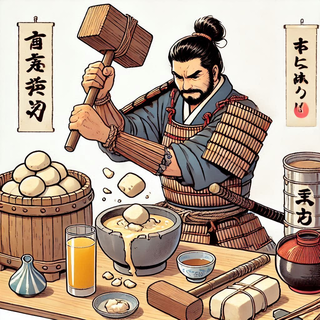January 11th is known as "Kagami-biraki" day. Kagami-biraki is a ceremony where we break and eat kagami-mochi (mirror rice cakes) offered to the gods during the New Year to pray for good health and family prosperity.
The Origin of Kagami-biraki
Kagami-mochi is taken down and eaten on January 11th after being offered on the household’s altar or shrine during the New Year.
In ancient times, samurai used to break mochi with a mallet and pestle and eat it to gain strength, which became the custom.
It is said Kagami-biraki brings good fortune for the New Year.
The Ritual of Kagami-biraki
Take down and purify the kagami-mochi.
Break the kagami-mochi with a wooden mallet or hands (avoid using knives).
Prepare and eat the broken kagami-mochi in dishes such as oshiruko (sweet red bean soup) or ozoni (soup with rice cakes).
Regional Differences
The day of Kagami-biraki varies by region, typically held on January 11th in Kanto and January 20th in Kansai.
In many areas, kagami-mochi is broken without using knives, but with wooden mallets instead.
Kagami-mochi is generally eaten as oshiruko or grilled and served in ozoni.
In the Tohoku region and Hokkaido, kagami-mochi is dried or preserved in cold for long-term storage.
Kagami-biraki is a traditional event that reflects the culture and history of each region in Japan, and is cherished as a means of praying for the health and happiness of families.
 |
【このカテゴリーの最新記事】
-
no image
-
no image
-
no image
-
no image
